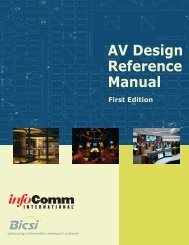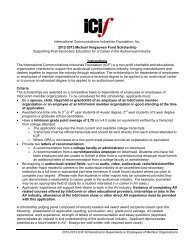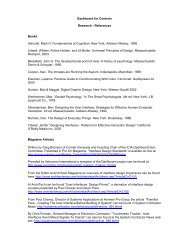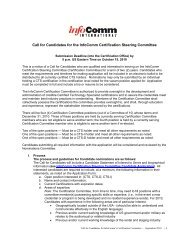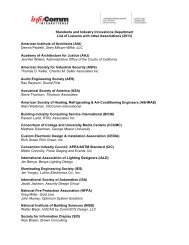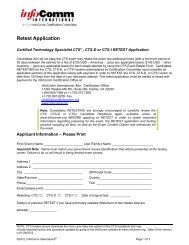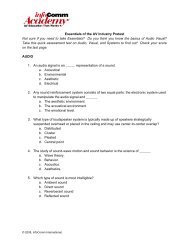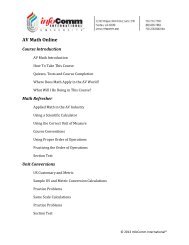Building Information Modeling (BIM) - InfoComm International
Building Information Modeling (BIM) - InfoComm International
Building Information Modeling (BIM) - InfoComm International
Create successful ePaper yourself
Turn your PDF publications into a flip-book with our unique Google optimized e-Paper software.
12<br />
Companies have a few different business models to consider when thinking about staff training with respect to <strong>BIM</strong>.<br />
The first option involves the training of current designers to undertake all of their design work in the <strong>BIM</strong><br />
environment.<br />
The second involves up-skilling all of their drafting staff to a higher technical level to undertake design<br />
responsibilities.<br />
The third is a combination of the first two where there is a specific set of rules and guidelines for mark-ups so<br />
that design mark-ups can be translated into the model clearly and efficiently.<br />
In any case, the <strong>BIM</strong> process allows for coordinated delivery earlier in the design process so that potential double<br />
handling or redesign is avoided. This benefit outweighs the cost of any additional training to up-skill staff no matter<br />
what business model for the delivery of <strong>BIM</strong> projects.<br />
Compatibility Between Software Platforms<br />
One of the biggest issues with early adaptors of <strong>BIM</strong> is the issue of inter-product compatibility. Due to the<br />
relatively new nature of the market, every software manufacturer is doing something different with its software.<br />
This interoperability challenge can make it difficult for projects to function if different team members own different<br />
software packages.<br />
This interoperability issue is not limited to different software platforms; due to the rapid development of the <strong>BIM</strong><br />
software industry newer versions of programs within the same platform can have interoperability issues.<br />
One alternative to the current product-specific models is a vendor-independent, neutral-file format. One such file<br />
format is the Industry Foundation Classes (IFC) format which captures both geometry and properties of intelligent<br />
building objects (objects with associated usable metadata) and their relationships within <strong>Building</strong> <strong>Information</strong><br />
Models, thus facilitating the sharing of information across otherwise incompatible applications.<br />
Innovation<br />
Since a goal of <strong>BIM</strong> is to assign constraints and parameters to intelligent objects to improve efficiency, there is a<br />
potential to inhibit innovation which would possibly otherwise occur without the automated processes and shared<br />
knowledge that <strong>BIM</strong> now provides. Those firms implementing <strong>BIM</strong> should view the parameters and metadata<br />
constraints as a global database that allows designers to save time associated with updating and configuring<br />
product-specific data repetitively on different projects, hence increasing the amount of time spent on system<br />
design and innovation.



